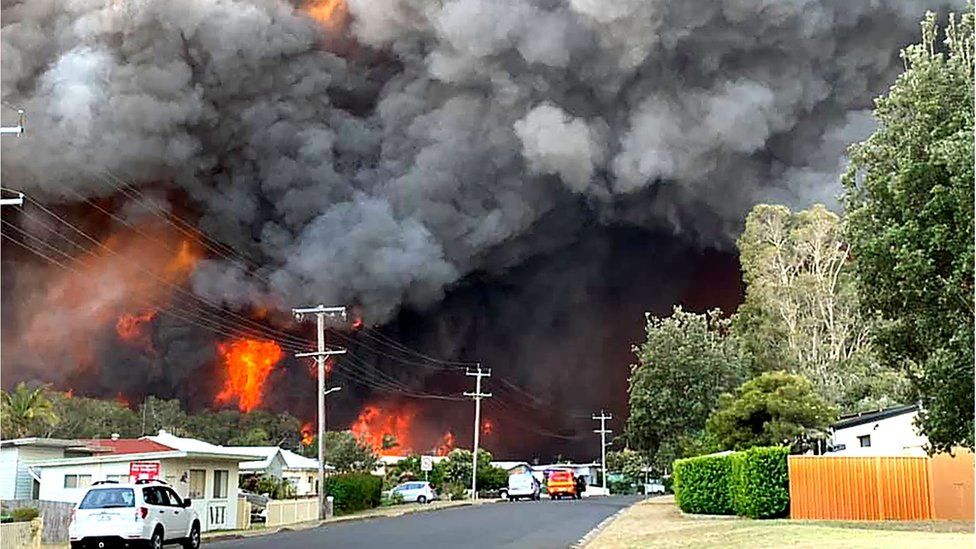The Value of Bushfire Management in Fire Protection
In the world of fire security, the relevance of efficient bushfire administration can not be downplayed. As neighborhoods worldwide come to grips with raising circumstances of wildfires, the positive method to stop and mitigating these all-natural calamities via critical bushfire monitoring strategies has actually become a critical component. Beyond the instant hazard to human life and home, the interplay in between bushfire administration and ecological preservation, area participation, and climate adjustment positions intricate obstacles that need detailed options.
Significance of Proactive Bushfire Prevention
Aggressive bushfire prevention methods are important in alleviating the devastating impacts of wildfires on communities and ecological communities. One crucial aspect of positive bushfire prevention is gas management.
In addition, creating firebreaks - removed areas where plants is strategically gotten rid of to develop an obstacle to reduce or quit the progress of a bushfire - is an additional crucial proactive procedure. By applying these strategies, the spread of wildfires can be limited, protecting both human lives and the atmosphere. Enlightening the public on fire security techniques and advertising community awareness about the significance of bushfire prevention are vital components of aggressive strategies. Ultimately, proactive bushfire avoidance plays a substantial duty in securing communities and communities from the destructive impacts of wildfires.
Function of Neighborhood Engagement in Fire Security
Involving the area in fire defense efforts is integral to boosting the effectiveness of proactive bushfire avoidance techniques. Area engagement plays an important duty in promoting a cumulative understanding of the threats positioned by bushfires and the value of preparedness measures. By including neighborhood residents, authorities can distribute important details on fire security techniques, evacuation procedures, and early warning systems, equipping people to take aggressive steps to secure their lives and buildings.
By fostering a culture of readiness and cooperation, areas can reinforce their capability to react properly to bushfire emergency situations, lessening the effect on lives and properties. Eventually, community engagement is a keystone of detailed fire protection approaches, highlighting the significance of collective activity in safeguarding at risk locations from the danger of bushfires.
Relevance of Wildlife Conservation in Bushfire Management
Conservation of wildlife plays a crucial role in efficient bushfire monitoring strategies, making sure the protection of diverse environments and biodiversity in fire-prone regions. Wild animals conservation is crucial as it adds to the general resilience of ecological communities, helping in their capacity to recoup and withstand from the effect of bushfires. By conserving habitats and securing numerous species, the all-natural equilibrium within these communities is kept, which is important for their long-term health and wellness and sustainability.
Furthermore, wildlife preservation additionally assists in reducing the risk and intensity of bushfires. Healthy and balanced ecosystems with unspoiled wildlife populaces can act as natural firebreaks, decreasing the spread of fires and limiting their destructive capacity (BAL Report). Certain pet species, like tunneling animals or birds that spread seeds, play one-of-a-kind roles in avoiding fires or helping in the post-fire regrowth of environments
Including wild animals preservation into bushfire administration techniques is not just important for securing biodiversity however additionally for advertising the general wellness and strength of ecosystems in the face of increasing fire threats.
Benefits of Strategic Fuel Decrease Programs
Purposefully carrying out gas decrease programs is essential in minimizing the danger and effect of bushfires in fire-prone regions. These programs entail regulated burning, mechanical clearing, and various other approaches to lower the quantity of combustible plant life offered to fuel wildfires. By strategically decreasing gas tons in key locations, such as close to household neighborhoods or vital infrastructure, the strength and spread of bushfires can be substantially lowered.
Among the primary advantages of fuel decrease programs is the improvement of total fire strength in an ecological community. By producing tactical gas breaks and check out this site minimizing the connection of greenery, these programs aid to interrupt the path of a bushfire, making it simpler for firefighters to have and extinguish the blaze. Furthermore, gas decrease programs can secure biodiversity by avoiding exceedingly intense fires that can ravage environments and endanger wild animals populaces.
Furthermore, these programs can likewise guard human lives and residential or commercial property by decreasing the risk of catastrophic fires that present a significant danger to neighborhoods. Inevitably, tactical gas reduction programs play a vital duty in proactive bushfire management and cultivating a more secure atmosphere for both individuals and nature.
Impact of Climate Adjustment on Bushfire Threat

Higher temperature levels cause drier greenery, making it more susceptible to ignition. Lowered click to read more rains in particular regions lengthens dry spell conditions, better increasing the flammability of the landscape. Furthermore, the transforming climate has altered wind patterns and climatic problems, resulting in more irregular fire habits and fast fire spread.
As the environment remains to change, the frequency and intensity of bushfires are anticipated to increase, demanding a proactive and adaptive strategy to bushfire management. Approaches must develop to represent the transforming threat landscape, incorporating climate forecasts and taking into consideration long-term resilience in fire management preparation. Dealing with the effect of climate change on bushfire risk is vital in creating effective techniques to safeguard lives, property, and the environment.
Conclusion
Finally, aggressive bushfire avoidance, area involvement, wild animals conservation, calculated fuel decrease programs, and factor to consider of climate change are essential components in effective fire security. By applying these strategies, we can much better handle bushfire risks and secure both human lives and the setting. BAL Report. It is crucial that stakeholders work with each other to prioritize these steps to minimize the devastating influence of bushfires on environments and areas

As the climate proceeds to alter, the frequency and intensity of bushfires are anticipated to increase, necessitating a positive and adaptive technique to bushfire administration.In verdict, positive bushfire prevention, area interaction, wildlife conservation, strategic gas decrease programs, and consideration of environment modification are critical elements in efficient fire defense.